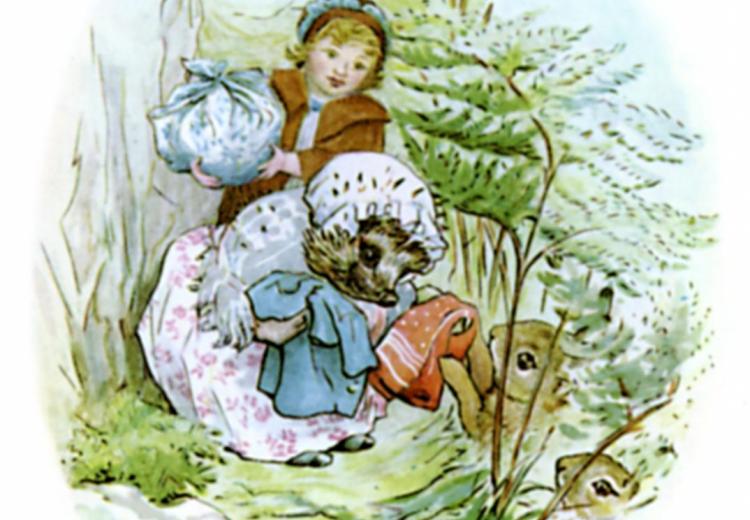Beatrix Potter's Naughty Animal Tales

Mrs. Tiggy-Winkle and Lucie, from The Tale of Mrs. Tiggy-Winkle (1905).
Beatrix Potter's charming animal stories are as popular today as when they were published in the early 1900s, owing largely to Potter's beautiful artwork and the simplicity of her characters and themes. By studying Beatrix Potter's childhood and her artwork, students gain insight into the unusual, solitary world of Victorian childhood and can compare/contrast it with their own world to understand why Potter wrote such simple stories and why she wrote about animals rather than people. Students can also learn the difference between an author and an illustrator and practice some of the same artistic techniques used by Potter to create masterpieces of their own.
Guiding Questions
What was Beatrix Potter's childhood like, and how does it compare to or contrast with the students' lives?
Where did Beatrix Potter get the inspiration for her animal stories?
What techniques did Beatrix Potter use to create her illustrations for her books?
What personality traits do Beatrix Potter's naughty animals possess?
What kinds of trouble do they get into and what kinds of resolutions do they find for their problems?
What lessons are taught in the outcomes of the naughty animal stories?
Learning Objectives
Compare Beatrix Potter's childhood, artwork, pets, and stories to draw conclusions about her life and writing.
Compare aspects of Victorian childhood and with persona experiences.
Locate England on a map or globe and identify important political, social, and cultural events and figures in Victorian England.
Evaluate the settings, characters, bad deeds, consequences, and outcomes presented in the stories.
Apply Potter's themes to their own lives by writing about a time when they committed a bad deed and learned something from it.
Write and illustrate a simple naughty animal story using the story elements discussed in this lesson.
